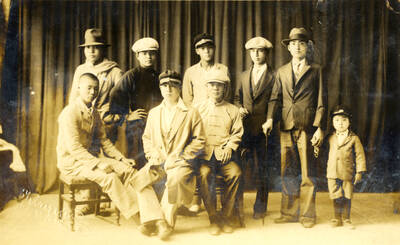Microsoft has all but admitted that Windows Vista was a flop. So why not start using its successor right now? You can, simply by downloading the free release candidate of Windows 7 (www.microsoft.com/Windows/Windows-7/download.aspx). Fully functioning, robust and stable, Windows 7 RC (release candidate) has been available for a week now, and its usage has already jumped 22 percent, according to Microsoft.
The headline features of Windows 7 — greater compatibility, speed, interface enhancements and less annoyance from user account control — are really designed to say to users: “We know Vista disappointed you; this version will not.” But Microsoft has done more than just make amends with the forthcoming Windows. It has also slipped in a lot of useful enhancements and features. Here are a few.
• Sticky notes
You work all day at the computer, and you need somewhere to place sticky notes to remind yourself to pick up some milk, make a doctor’s appointment, or call the plumber, right? In the past, you probably stuck such notes on your computer monitor — or put them on scraps of paper scattered around your desk. Thanks to the new Windows 7 applet called Sticky Notes, you can get rid of all of those annoying pieces of paper.
Sticky Notes are just what they sound like: little virtual notes that resemble real-world sticky notes. These, however, you can place anywhere on your Windows desktop. And they stay stuck to the desktop for as long you want — even after rebooting.
The default sticky note is yellow — but you can change the color simply by right-clicking your sticky note.
• Snipping Tool
Another nifty little Windows 7 tool that falls into the category of “why didn’t they think of this earlier” is called Snipping Tool. Available directly from the Start menu, Snipping Tool allows you to select and capture anything that’s displayed on your monitor and either save it as a graphics file or paste it into an e-mail message, document, or graphics program.
To do this previously, you would have had to capture an entire screen or window and then switch to a paint program to crop the image, copy it to the clipboard, and then move it to its destination. Snipping Tool boils all of that down to three clicks: one to open the tool, one to select the region, and another to press Ctrl-C. Capturing part of your screen doesn’t get any easier.
Snipping Tool even comes with a pen tool that allows you to annotate or mark up what you’ve captured, as well as a highlighter that makes it easy to highlight text in a capture. A one-click
e-mail toolbar button moves the captured image and any annotation to your default e-mail program, ready to send off to a friend or colleague.
• Libraries
In previous versions of Windows, Microsoft pretty much dictated to you where your files could be stored — under My Documents, My Music, My Videos, and so on. While it’s true that you could choose your own locations with individual applications, there were enough areas of the operating system that kept pointing back to those default locations that you probably eventually just gave up and accepted the locations Microsoft chose for you.
The new Libraries feature goes some way to putting you back in control. When you open the Windows Explorer file manager — or click Computer from the Start menu — you’ll see the Libraries category listed to the left, with initial libraries called Documents, Music, Pictures, and Videos already created.
Libraries in Windows 7 are actually pointers to one or more locations on your hard drive where documents of a certain type are stored. The Documents library, for example, can contain pointers to the location where you keep your Word documents, your Excel spreadsheets and your PowerPoint presentations. The library concept is quite powerful because with one click you can actually see or search through documents that are in fact stored in many different locations.
Right-clicking a library name and selecting Properties brings up a dialog box that allows you to establish the locations to which that library points. The default library names that Microsoft supplies are fully configurable — or deleteable.
• Homegroup
Homegroup is another new concept in Windows 7, and it’s designed to make the process of sharing files, music, videos, pictures and printers on a home network much easier than before.
The process is simple. Click the word Homegroup in Windows Explorer — or in Computer from the Start menu — and indicate which resources you’d like to make available to others. Once your homegroup is created, others within your home can access your resources simply by clicking the word ‘homegroup’ as you did. Homegroup is only available on Windows 7 computers, and it’s only available on home networks.
• No nags
If Vista users had one message to deliver to Microsoft, it was probably “stop bugging me!” Vista drove people crazy at almost every turn, alerting them when their antivirus software was out of date or not installed, when a network was found or lost, when a firewall was not configured, when there was something awry with security settings, when a backup had not been configured, and of course whenever a file was to be deleted or a program installed. It’s no wonder that most companies still use XP.
With Windows 7, you can get rid of all of those types of nagging messages with a few clicks. Stop in at the new Change Action Center Settings screen, take a look at all of the ways that Windows has to annoy you, and turn everything off. Voila! No more nags.

On April 26, The Lancet published a letter from two doctors at Taichung-based China Medical University Hospital (CMUH) warning that “Taiwan’s Health Care System is on the Brink of Collapse.” The authors said that “Years of policy inaction and mismanagement of resources have led to the National Health Insurance system operating under unsustainable conditions.” The pushback was immediate. Errors in the paper were quickly identified and publicized, to discredit the authors (the hospital apologized). CNA reported that CMUH said the letter described Taiwan in 2021 as having 62 nurses per 10,000 people, when the correct number was 78 nurses per 10,000

As we live longer, our risk of cognitive impairment is increasing. How can we delay the onset of symptoms? Do we have to give up every indulgence or can small changes make a difference? We asked neurologists for tips on how to keep our brains healthy for life. TAKE CARE OF YOUR HEALTH “All of the sensible things that apply to bodily health apply to brain health,” says Suzanne O’Sullivan, a consultant in neurology at the National Hospital for Neurology and Neurosurgery in London, and the author of The Age of Diagnosis. “When you’re 20, you can get away with absolute

May 5 to May 11 What started out as friction between Taiwanese students at Taichung First High School and a Japanese head cook escalated dramatically over the first two weeks of May 1927. It began on April 30 when the cook’s wife knew that lotus starch used in that night’s dinner had rat feces in it, but failed to inform staff until the meal was already prepared. The students believed that her silence was intentional, and filed a complaint. The school’s Japanese administrators sided with the cook’s family, dismissing the students as troublemakers and clamping down on their freedoms — with

As Donald Trump’s executive order in March led to the shuttering of Voice of America (VOA) — the global broadcaster whose roots date back to the fight against Nazi propaganda — he quickly attracted support from figures not used to aligning themselves with any US administration. Trump had ordered the US Agency for Global Media, the federal agency that funds VOA and other groups promoting independent journalism overseas, to be “eliminated to the maximum extent consistent with applicable law.” The decision suddenly halted programming in 49 languages to more than 425 million people. In Moscow, Margarita Simonyan, the hardline editor-in-chief of the